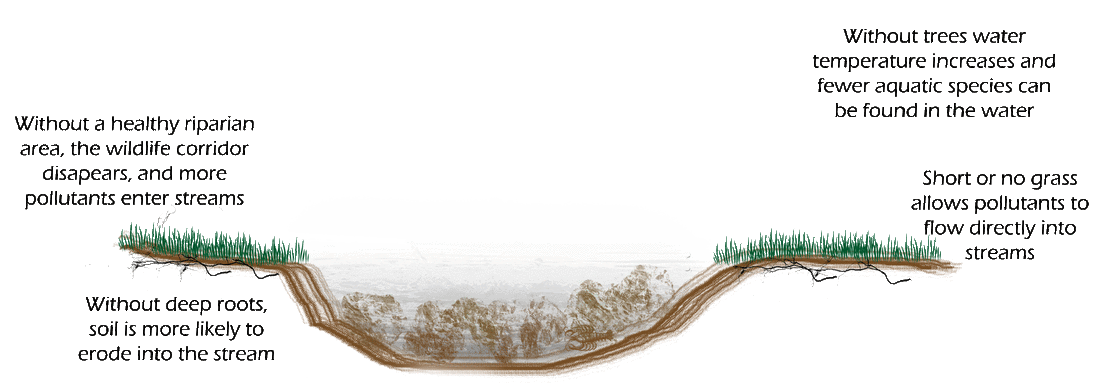The Importance of the Riparian Area
|
The land that borders a stream is know as a riparian area, it plays a vital role in the health of streams and rivers. The trees, shrubs, grasses and flowers that make up the riparian area serve as pollutant filters, bank stabilizers, habitat providers, wildlife highways and water coolers. When we make changes to the riparian area it has a negative impact on the stream and wildlife.
|
Importance of Trees:
Importance of shrubs, grasses and flowers:
|


